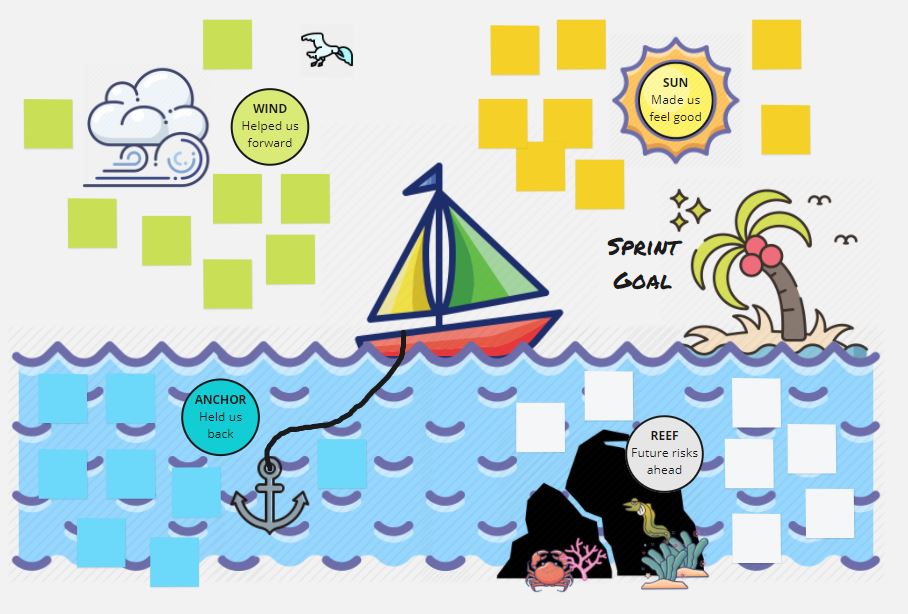

One team’s iteration retrospective results It can be conducted fairly easily, making all accomplishments and challenges visible, as illustrated in Figure 1. The last is a conventional method, in which the Scrum Master simply puts up three sheets of flipchart paper labeled ‘What Went Well’, ‘What Didn’t’, and ‘Do Better Next Time’, and then facilitates an open brainstorming session. Simple – Open a discussion and record the results under three headings.
#Agile retrospective ideas how to#
Building telemetry and recovery techniques into systems.Decoupling deployment from release (see Release on Demand).Improving architecture and design quality (see Architecture and Design Quality section of Built-In Quality).Test automation (including Test-Driven Development and Behavior-Driven Development) and Continuous Integration.Since many improvement items have a significant scope, the team should divide them into smaller improvement stories, so that they can focus on what they can improve during subsequent iterations.Īs organizations begin implementing DevOps and a Continuous Delivery Pipeline, Agile teams will have a robust list of improvement opportunities, including but not limited to:


This helps instill the concept of relentless improvement-one of the pillars of the SAFe House of Lean-in the individuals and the team. The iteration retrospective is used by Agile teams to reflect on the iteration just completed and to derive new ideas to improve the team’s process. When issues have been identified, root cause analysis is performed, potential corrective actions are discussed, and improvement Stories are entered into the Team Backlog. The qualitative part discusses the team practices and the specific challenges that occurred during the last iteration or two. The quantitative review gathers and evaluates any metrics the team is using to measure its performance. Timeboxed to an hour or less, each retrospective seeks to uncover what’s working well, what isn’t, and what the team can do better next time.Įach retrospective yields both quantitative and qualitative insights. The Iteration Retrospective is a regular event where Agile Team members discuss the results of the Iteration, review their practices, and identify ways to improve.Īt the end of each iteration, Agile teams that apply ScrumXP (and many teams who use Kanban) gather for an iteration retrospective. At regular intervals, the team reflects on how to become more effective, then tunes and adjusts its behavior accordingly.


 0 kommentar(er)
0 kommentar(er)
